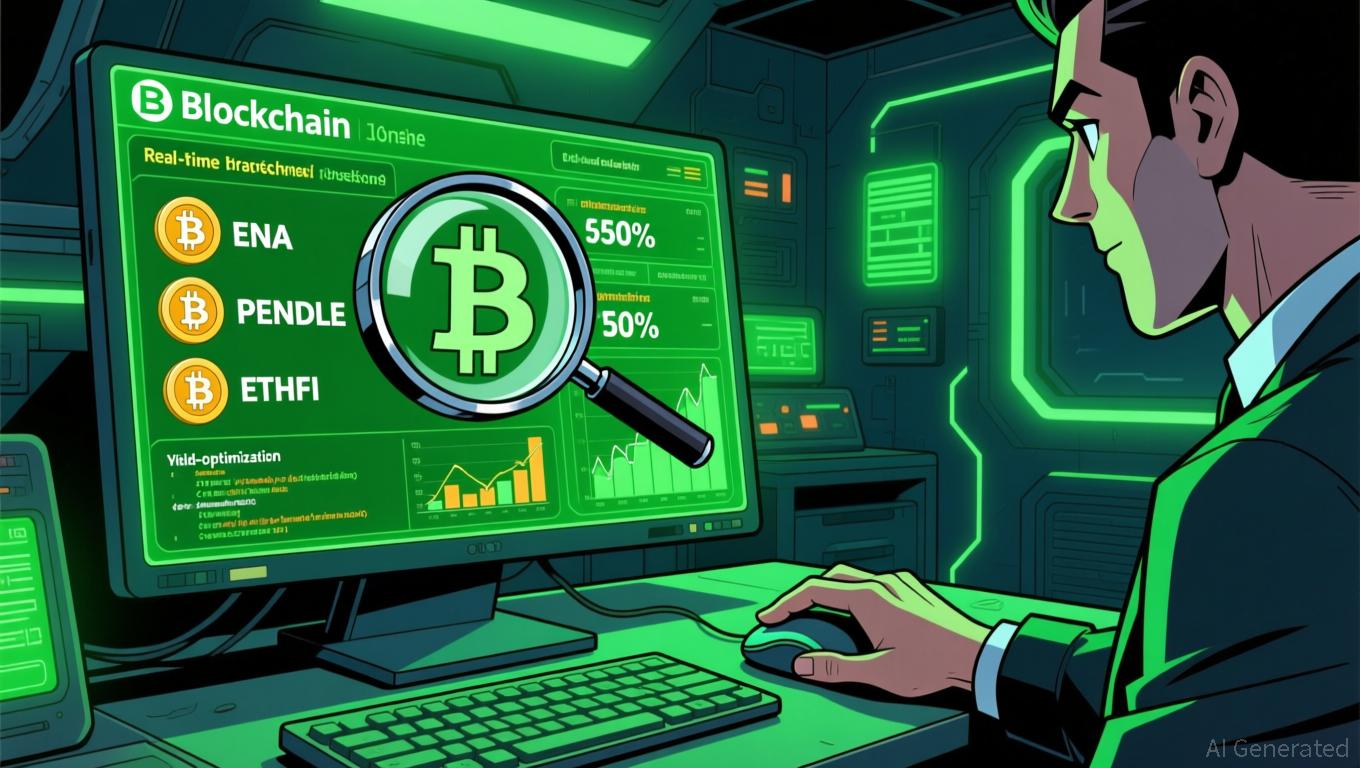Investing in K-12 School Facilities: Recognizing the Overlooked Potential in Addressing Counselor Gaps
- U.S. K-12 schools face a severe counselor shortage, with a national student-to-counselor ratio of 376:1 far exceeding the recommended 250:1 benchmark. - Over 56% of counselors manage caseloads above 300 students, diverting focus from core duties like mental health support and college guidance. - Research shows increased counselor access boosts college enrollment by 10 percentage points and strengthens workforce readiness, particularly for low-income students. - While federal programs like BSCA and ARP pr
The Price of Overlooking the Problem: A System Under Pressure
The burden placed on school counselors is significant.
This issue goes beyond just funding—it reflects a broader failure to appreciate the long-term economic benefits of investing in people.

Policy Solutions: Insights from Practice
Government action has started to tackle this issue, though progress is uneven. The Bipartisan Safer Communities Act (BSCA), passed in 2022,
Experiments at the state level offer valuable lessons.
The Value of Investment: Workforce Preparation and Social Advancement
The case for addressing counselor shortages is strong from an economic perspective.
Furthermore, the benefits of investing in counselors go beyond individual achievements. By supporting career discovery and teaching financial skills, counselors help connect education with employment opportunities.
The Need for Ongoing Support
The need to resolve the shortage of school counselors is urgent. While the BSCA and ARP have offered important short-term solutions, the looming end of these funds in 2024 threatens to undo recent progress.
For both investors and policymakers, the takeaway is unmistakable: supporting school counselors is not just a moral choice but a smart economic strategy. The benefits—ranging from a stronger workforce and higher earnings to a more equitable society—are clear and far-reaching. In times of budget constraints, this is an investment opportunity that should not be missed.
Disclaimer: The content of this article solely reflects the author's opinion and does not represent the platform in any capacity. This article is not intended to serve as a reference for making investment decisions.
You may also like
Hayes Focuses on High-Yield DeFi Initiatives Amid Growing Institutional Interest
- Arthur Hayes acquired 2.01M ENA , 218K PENDLE, and 33K ETHFI tokens via Cumberland, totaling $1.42M in DeFi projects focused on yield optimization and automated market-making. - The purchases highlight growing institutional interest in DeFi protocols offering structured products and tokenized derivatives, with ENA and PENDLE leading in governance and yield strategies. - Hayes's strategy aligns with leveraging on-chain data to target undervalued assets, potentially amplifying market sentiment but exposing

Bitcoin Updates: Major Institutions Propel Bitcoin Beyond $90K Amid Expanding ETF Investments
- Institutional investors drove Bitcoin above $90,000 in November 2025 through strategic ETF allocations, including Texas's $10M initiative and Harvard's $443M IBIT stake. - ETF flows showed $238M inflows into spot Bitcoin ETFs despite prior $3.5B outflows, reflecting maturing institutional diversification and crypto-friendly government frameworks. - Texas's planned self-custodied Bitcoin transition and Mubadala's tripled IBIT holdings highlighted growing acceptance of Bitcoin as a strategic reserve asset.

Solana News Update: CHOG Soars by $10M—Meme Coin Frenzy Faces Analyst Cautions Over Market Fluctuations
- CHOG, a Monad ecosystem meme coin, briefly hit $10M market cap on Nov 27, driven by $17.9M 24-hour trading volume. - Monad's mainnet launch (Nov 24) raised $269M via a 1.43x oversubscribed Coinbase ICO, attracting 85,000 participants. - Analysts warn meme coins like CHOG face volatility risks due to social media-driven hype and lack of fundamentals. - Meme coin market reached $47.1B in Q4 2025, with DOGE and SHIB leading despite emerging Solana/Monad projects gaining traction. - Institutional investors r

Vitalik Buterin Backs ZKsync, Igniting Fresh Hopes for Layer 2 Scaling
- ZKsync's Atlas upgrade (Oct 2025) achieved 15,000 TPS and $0.0001 per transfer costs via RISC-V-based zkVM, solving Ethereum's scalability limitations. - Vitalik Buterin's endorsement catalyzed institutional adoption, with Deutsche Bank and Sony leveraging ZKsync for cross-chain settlements and data privacy. - ZK token surged 50% post-endorsement, while ZKsync's TVL reached $3.5B by 2025 through EVM compatibility and liquidity interoperability breakthroughs. - Upcoming Fusaka upgrade (Dec 3, 2025) aims t
